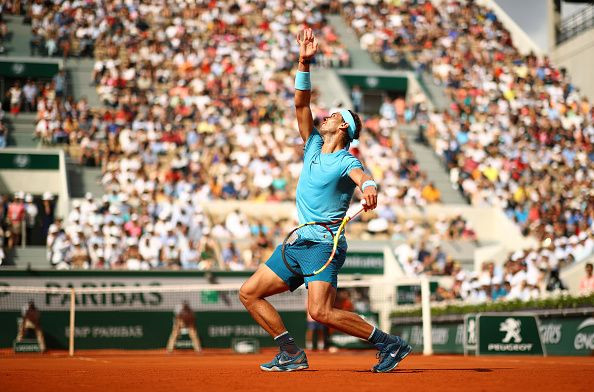French Open: Rafael Nadal's Second Serve Success Key To Clay Dominance?

The secret to Rafael Nadal's dominance on clay may well be his remarkable success rate when it comes to points won from his second serve.
Nadal's dominance on clay does not look like stopping any time soon as he most recently reached the third round of the French Open following an emphatic win over Guido Pella on Thursday and will face Richard Gasquet next on Saturday.
On a quest for a record 11th French Open crown, the Spaniard only lost once in the clay-court season this year with titles in the Monte-Carlo Masters, Barcelona Open and the Rome Masters while conceding just four sets in the process so far.
Before the start of the clay swing, the likes of Roger Federer, Andy Murray, Boris Becker and Novak Djokovic all explained what they thought made Nadal so good on the surface.
Some of the points mentioned were his movement, the spin he puts on the ball and his adaptation to the surface. However, Djokovic's note of his left-handedness may be the most accurate.
"He is left handed and that helps his game, he gets amazing angles and shows good invention on the court," he said.
The fact that Nadal is left-handed helps him excel when it comes to his second serves — an aspect of the game that is a weakness for many tennis players.
According to a feature by Amy Lundy for FiveThirtyEight, the 31-year-old is the best second-server in tennis history in terms of points won, with a 56.7 percent success rate on clay while in the past year, it's increased to 66.4 percent.
In fact, in the four sets Nadal lost on clay this year, it is notable his highest second-serve points won was 50 percent while his lowest was 29 percent, which occurred in the second set of his loss to Dominic Thiem at the Madrid Open.
"The elements that make his second serve so crushing, particularly on clay, are part intuitive and part mystery," Lundy wrote. "Nadal plays left-handed — a topsy-turvy problem for players conditioned to a world full of right-handed serves. A lefty slice serve travels the opposite way of what players are used to."
But it is not just the way he delivers his second serve. It is primarily how he plays when he gets his returns from a second serve as tennis editor and coach John Yandell revealed his service game on clay is not too different from other serves on tour "which combine slice and topspin."
"Most likely it’s just Rafa," Yandell said of his success from second-serve points. "What he does after he puts the serve in play."
However, the debate on what makes Nadal so good on clay will only continue as Serena Williams' coach Patrick Mouratoglou recently claimed it was the 16-time Grand Slam winner's return game that is crucial to his success on the surface.
"Rafa's return strategy is far from being the most aggressive on tour - but it is lethal," Mouratoglou said last month. "Nadal tends to stand really far from the baseline, slipping further and further every year. In 2015, he stood on average, 3.24m behind the baseline. In 2017, it was 4.39m and this season he is 28cm further back."
"How is this effective? It enables him to put the ball back in play every time. He made 89 per cent of first serve returns last year. By doing so he can take big swings at the ball, hitting his first serve return at a decent 113km/h, which is faster than Alexander Zverev."
© Copyright IBTimes 2024. All rights reserved.





















